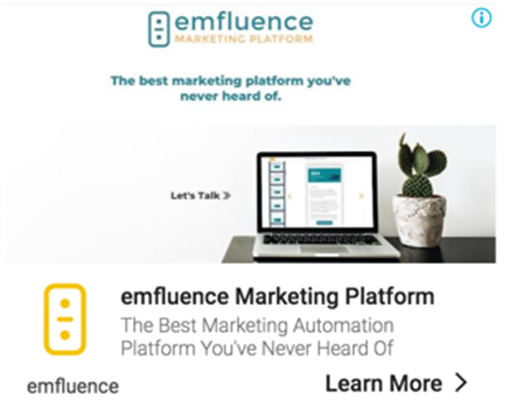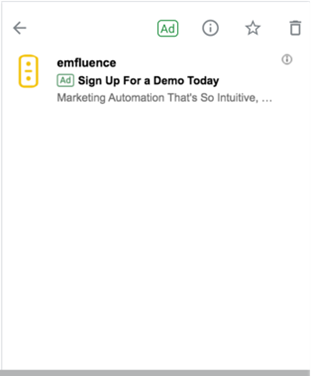It’s hard to comprehend how small paid media ads used to be. My earliest working memories involve having to abbreviate company names to fit into a headline and split 70 characters evenly across two description fields with 35-character limits on some platform called Overture. The first Facebook ads I created had limited text and imagery so small you could barely make out what the product was (which didn’t stop me from buying a Denny Crane bobblehead from an ad).
Today, ad copy character limits have increased dramatically, allowing media buyers to focus much more on testing. As a matter of best practice Google recommends at least three static ads per Ad Group, and Facebook recommends at least an A/B test (but allows you to create up to 50 ads per Ad Set if masochism is your thing). At scale, this important tactic can become quite time consuming.
Enter: Responsive Ads. Responsive Ads allow media buyers to provide ad copy assets that can be used to build creative dynamically. Below we’ll go over how these work in each channel.
Google Display Network
The Google Display Network, encompassing placements across 90% of the internet including Google native placements like Gmail and YouTube, was one of the first places Responsive Ads were introduced. Assets you provide to Google to produce ads include:
- Business Name
- Business Logo (up to 5)
- Images (up to 15)
- Long Headline (90 characters)
- Short Headlines (up to 5, 30 characters)
- Descriptions (up to 5, 90 characters)
Those are the required assets, but Google also offers a few additional customizations:
- Call to Action (Choose from 12)
- Custom Colors
Using these assets, Google will mix & match to create the right ad for the right person. Their algorithm will consider which individual assets perform best, which combinations perform best together, in addition to leveraging their AI to learn which assets and combinations work best for individual users based on personalized data. In other words, if other people like me have high click-through and high conversion rate on a certain combination of assets, Google will serve that ad to me as well.
The added benefit is that these assets will also mix and match to fulfill any ad size needed on the Display Network:

In addition to also adjusting to Google’s Native ad placements:

Responsive Ads’ benefit on the Google Display Network is twofold: optimizing ad creative to provide the right ad for the person, as well as offering a lower barrier to entry for creating ads without a graphic designer.
Google Search Network
Following the success of Responsive Ads on the Display Network, Google rolled out a similar product for the Search Network. The ad specifications for a Search Ad are:
- Headlines (up to 15, 30 characters)
- Descriptions (up to 4, 90 characters)
These are the familiar specifications of static Expanded Text Ads, but with the added benefit of 5x as many headlines and 2x as many descriptions. Our team will typically focus the most on Headline testing as there are more options and they are more prominent to in use.

Once again, the assets provided will mix and match to optimize algorithmically for click-through rate and conversion rate, in addition to using AI to customize based on audience. One of our client campaigns with wide adoption of these ads saw 125% better CTR & 180% better Return on Ad Spend with Responsive Ads compared to static ads in Q4 2020.
There are tools provided on this ad format for media buyers to assert some control over the appearance of their search ads. For example, if brand standards specify for the brand name appear in Headline 1, all the branded headlines can be anchored to position 1. This also precludes the brand from appearing in all three headline spots (although the algorithm will likely prevents this from happening anyway).
Facebook Ads
Outside the Google ecosystem, Facebook also features what they call Dynamic Creative, which works the same way, allowing marketers to upload assets to automatically generate variations tailored to individuals & placements. Specifications for Dynamic Creative are:
- Images, Videos, or Slideshows (up to 10)
- Can be a mix of any of the three
- Primary Text (the text that appears above the image, up to 5)
- Headline (the bolded text that appears below the image, up to 5)
- Description (the text below the headline, up to 5)
- Call to Action (pick from 16, up to 5)
Like Google, these assets will vary by individual and placement to increase the chances of response, leading to better ad outcomes. An additional advantage is the opportunity to be very creative with the type of imagery that can be used compared to a display ad, as well as the lack of character limits on Primary text.
Optimizing to Placements is also very important since there are so many between Facebook, Instagram, WhatsApp, Messenger, and their Audience Network. More visual imagery will work best on Instagram, videos better on stories, and text-based copy on Facebook. Dynamic Creative provides time savings in optimizing to all these different placements.
Programmatic
The prospect of using Responsive Ads gets less user friendly and more complicated as you move from Native placements like Google and Facebook and expand your strategy to Programmatic Display. The good news is that it can still be done!
Many Demand Side Platforms (DSPs) will integrate with Ad Server platforms, which are used to feed creative to the DSP rather than upload it directly. HTML5 ad copy can be customized with a feed of different Images, Headlines, and Calls to Action to offer a personalized and responsive experience for the user. A good example of this is when you receive ads for a product you left in an abandoned shopping cart with up-to-date pricing.
Conclusion
In the year 2021, consumers expect the marketing delivered to them to be unique, customized, and relevant. This expectation is leading rumors that Google will make the Responsive Text Ad the default Search campaigns and begin deprecating static ads. Whether this comes to pass or not, adopting Responsive Ads in your campaigns will lead to better user experience and thus improved marketing results for your campaigns.



